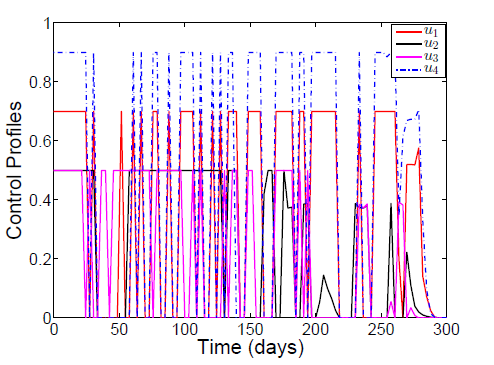Optimal Control of the Coronavirus Pandemic with Impacts of Implemented Control Measures
Keywords:
Coronavirus, Epidemiological model, Objective functional, Optimality system, Pontryagin’s maximum principle, Disease prevalenceAbstract
This paper considers the current global issue of containing the coronavirus pandemic as an optimal control problem. The goal is to determine the most advantageous levels of effectiveness of the various control and preventive measures that should be attained in order to cost effectively drive the epidemic towards eradication within a relatively short time. Thus, the problem objective functional is constructed such that it minimizes the prevalence as well as the cost of implementing the various control measures subject to a model for the disease transmission dynamics which incorporates the existing controls. The optimality system of the model is derived based on Pontryagin's maximum principle while the resulting system is solved numerically using the Runge-Kutta fourth order scheme with forward-backward sweep approach. Findings from our results show that the new cases and the prevalence of the disease can be remarkably reduced in a cost effective way, if the specified optimal levels of effectiveness of the various preventive and control measures are upheld continuously for at least a month. Moreover, the results also show that the disease can be eventually eradicated if these effectiveness levels are sustained over a reasonable length of time.

Published
How to Cite
Issue
Section
Copyright (c) 2022 Journal of the Nigerian Society of Physical Sciences

This work is licensed under a Creative Commons Attribution 4.0 International License.
How to Cite
Most read articles by the same author(s)
- Omowumi F. Lawal, Tunde T. Yusuf, Afeez Abidemi, On mathematical modelling of optimal control of typhoid fever with efficiency analysis , Journal of the Nigerian Society of Physical Sciences: Volume 6, Issue 4, November 2024







